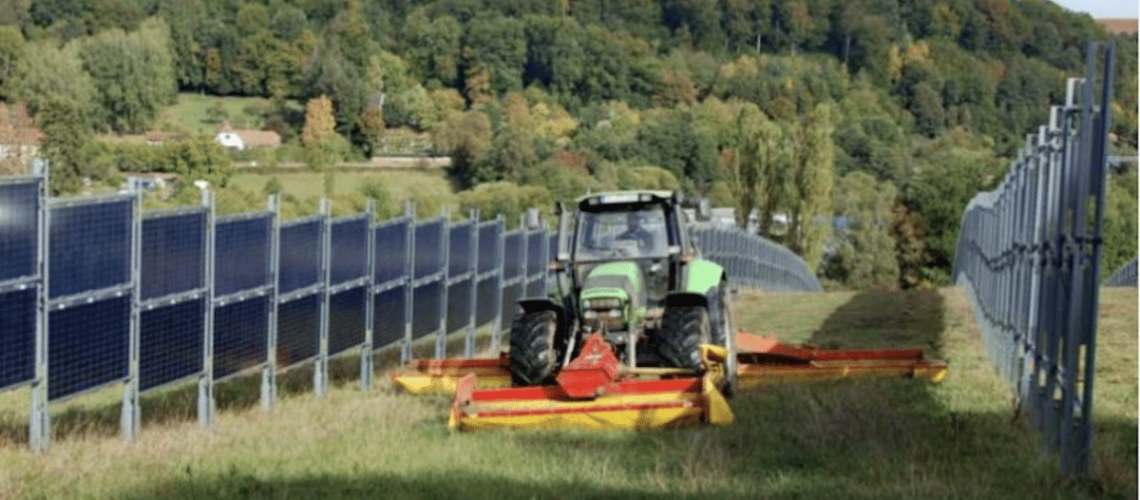Vertical solar plants with bifacial modules can absorb more energy than other tilted models and are finding agricultural application around the world.
U.S. solar company iSun Inc. is partnering with German agrivoltaics manufacturer Next2Sun AG to construct a vertical agrivoltaic system in South Burlington, Vt., set to begin operation early this year.
The 50.37 kW (ac) plant will sit on 3.7 acres and consist of 3 rows separated by 30 feet. There will be 138 monocrystalline bifacial solar modules placed on 69 ground-mounted Next2Sun racks. Next2Sun also states that vegetables and saffron can be planted between each row.
Vertical solar plants are an alternative for landowners transitioning to renewable energy because their directional orientation and bi-facial design allow them to absorb more energy than other tilted models. One study published in the Office of Scientific and Technical Information database found that ground-mounted, vertical, east-west facing bifacial solar panels outperformed south-north-facing, optimally tilted modules by almost 15%, showing an albedo of 0.5 percent.
Next2Sun reports that its vertical plants help to avoid the overbuilding of agricultural land because they take up less space. One Colorado farmer found that installing vertical, bi-facial solar panels offered a cost-effective and environmentally friendly alternative for renewable electricity generation. “Nestled between two greenhouses, the unique vertical bifacial solar panel system optimized land use while potentially capitalizing on the high albedo effect of the highly reflective greenhouse materials,” he said.
This most recent project is part of a more extensive portfolio of Next2Sun’s patented solar panel design. At the start of 2023, the company announced a partnership with international green energy infrastructure developer TEP Renewables Ltd to expand agrivoltaic systems in the U.K.
The Next2Sun system also adds to iSun’s burgeoning clean energy technology portfolio. The organization has been exploring innovative solutions to help advance technology since the early seventies. “Of all the innovations we’ve enabled, none have been as important as the transition from dirty to clean energy,” the company states.
The Renewable Energy Solutions Program of the German Energy Solutions Initiative supports the project. The program helps German companies in the renewable energy and energy efficiency industry enter new markets. The initiative is part of a government program intended to support suppliers of sustainable energy solutions start in foreign markets.
The German Energy Solutions Initiative focuses on helping small and medium-sized businesses. It supports participants by giving them a good idea of what’s needed to enter a specific market in addition to sharing insights on what new markets to watch out for.
Heiko Hildebrandt, the CEO of Next2Sun, said, “In iSun, we have found a partner who, like us, wants to accelerate the energy transition. With our vertical bifacial agrivoltaics system, we can contribute to this, especially in areas such as the north-east of the USA. The vertical Next2Sun system always produces electricity when conventional P.V. systems are producing less.”
Read more about vertical agrivoltaic installations around the word here.



